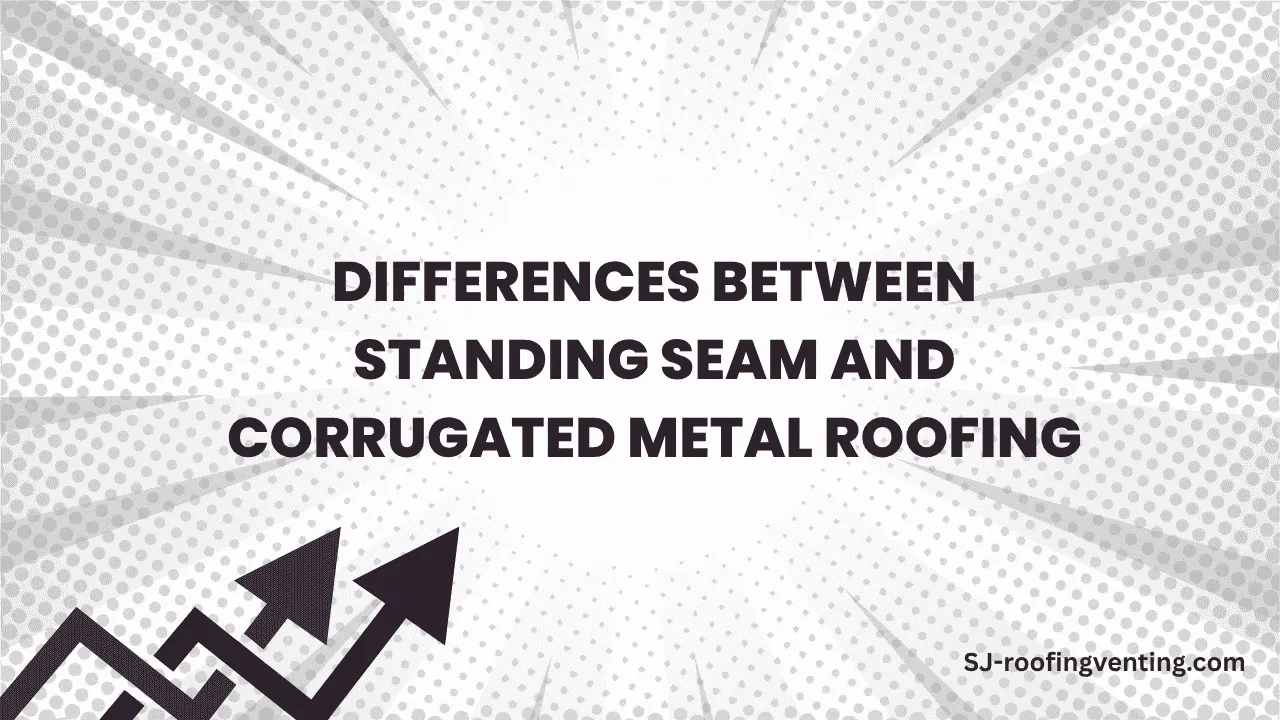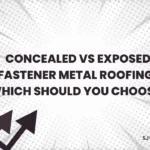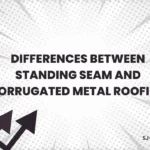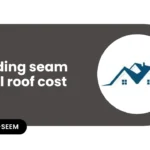Okay, now we discuss the major differences between standing seam metal and corrugated metal roofing. When it comes to roofing, not all types are equal. There are basically two most common types: standing seam metal roofing and corrugated (screw-down) metal roofing.
These two types of metal roofs may look similar in appearance, but they are totally different. In this blog post, we will explore 5 major differences between these two roofing systems to help you make the best decision.
1. Exposed vs. Hidden Fasteners
Corrugated Roofing: Exposed Fasteners
Corrugated metal roofs use exposed screws to attach panels to the structure. These screws go directly through the face of the panel and are visible from above. Each screw relies on a small neoprene rubber washer to prevent water from seeping through.
However, over time—typically between 9 to 12 years—these washers tend to fail, leading to potential leaks.
Standing Seam: Hidden Fasteners
Standing seam metal roofs use a clip system. The screws go through a clip underneath the panel rather than through the panel itself. This results in a cleaner appearance and better waterproofing, as there are no exposed holes that can deteriorate over time.
Why it matters: Hidden fasteners eliminate one of the most common leak points in metal roofing—the rubber washer.
2. Expansion and Contraction
Standing Seam: Designed to Move
Metal naturally expands when heated and contracts when cooled. Standing seam systems are designed with clips that allow the panel to “float”, meaning they can move slightly without breaking the seal.
Corrugated Roofing: Fixed in Place
Corrugated panels are screwed down through the panel, pinning them in place. When the metal expands, pressure builds up around the screws, which can eventually loosen fasteners and cause leaks.
Why it matters: Thermal movement happens every day. A roof system that accommodates this movement will last longer and perform better.
3. Interlocking Trims and Seams
Standing Seam: Interlocking Trim System
Trims such as ridges, eaves, valleys, and rakes are designed to interlock in a standing seam system. These trims use hems and offset cleats, providing a tight, waterproof fit without visible screws.
Corrugated Roofing: Overlapping Panels with Screws
In a screw-down system, metal panels simply overlap each other and are fastened with screws. There are no interlocking details, which increases the risk of water intrusion at trim joints.
Why it matters: Interlocking trims offer better protection, cleaner aesthetics, and fewer leak points.
4. Seamless Panel Runs
Standing Seam: Full-Length Panels
Standing seam panels are often roll-formed on-site, allowing for continuous runs from eave to ridge, even on roofs over 100 feet long. This eliminates horizontal seams, which are common sources of leaks.
Corrugated Roofing: Shorter Panels, More Seams
Due to material limitations, corrugated panels typically come in shorter lengths, such as 15 or 30 feet. These panels must be overlapped and joined with screws, introducing more opportunities for leaks.
Why it matters: Fewer seams mean fewer places for water to enter your building.
5. Metal Thickness and Paint Quality
Corrugated Roofing: Thinner and Less Durable
Corrugated panels are usually 29-gauge, which is thinner and more prone to denting or corrosion. They typically use siliconized polyester paint, which can chalk and fade within 10–15 years.
Standing Seam: Thicker and Longer-Lasting
Standing seam panels are usually 24-gauge (thicker) and come with Kynar paint finishes. These coatings have 35-year warranties, ensuring long-term durability and color retention.
Why it matters: Thicker metal and high-performance paint mean your roof stays attractive and functional for decades.
Final Thoughts
Okay, now we take the decision. Both standing seam and corrugated metal roofing have their own benefits, pros, and cons. But standing seam metal roofing generally offers better performance, is highly durable, and looks more aesthetic and beautiful.
From hidden fasteners and interlocking trims to thicker materials and superior paint coatings, it’s easy to see why many professionals and homeowners choose standing seam roofing for long-term peace of mind.




